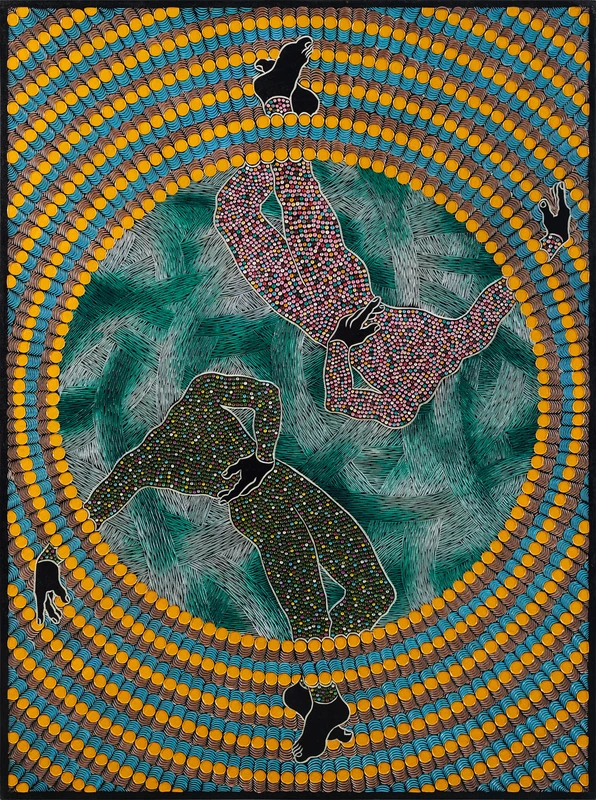Sthenjwa Luthuli: Inzalo Ye Langa—Birthplace of the Sun
25 Jul-24 Aug 2023


Inspired by African history and culture, Sthenjwa Luthuli’s second solo exhibition with Unit London explores ancestral connections and ancient traditions. The exhibition takes its name from Inzalo Ye Langa, or Birthplace of the Sun, the African name for a series of stones believed to be the oldest manmade structure in the world. Situated in the sacred site of Mpumalanga in South Africa, the stones are a unique example of a monolithic solar calendar. By tracking the shadow of the sun cast by these stones, ancient peoples were able to discern the date, time and significant cultural events. Inspired by the ancient site, Luthuli considers the practices and customs of his African ancestors before the infiltration of colonising forces. As such, Inzalo Ye Langa: Birthplace of the Sun, looks back to an older way of life, exploring deep rooted connections to natural and spiritual worlds.
Inzalo Ye Langa: Birthplace of the Sun presents a series of Luthuli’s meticulously hand carved and painted pieces. Each artwork is inspired by African history, harking back to Black ancestral traditions. Luthuli remarks that many younger generations in Africa have grown distant from their ancient heritage because of the effects of colonisation. During his youth, Luthuli was only taught about Western culture, becoming detached from his ancestral connections. As such, Luthuli began to research African history, teaching himself about ancient African customs and spiritual practices. For example, the circular patterns of colour in each artwork are inspired by traditional healing methods. African healers often use colourful beads in their process, using different colour formations to treat different issues. A beaded necklace in particular colours can be used to chase away bad spirits, to ease ailments or simply to bring luck to the wearer.
In order to bring awareness of these ancient traditions to life, Luthuli has chosen to incorporate sculpture into his artistic practice for the first time. Working in tandem with the carving technique he has been developing throughout his career, the artist aims to create something new while staying true to his signature aesthetic. He began to consider how to recycle the waste from his wood carved artworks, deciding to use the leftover sawdust as a sculptural material. Luthuli mixes the sawdust with wood glue to produce a similar texture to clay, using the material to create three dimensional figures. Similar to his meticulous and painstaking carving process, Luthuli’s sculptural practice is thorough, taking six months for each sculpture to dry.
Throughout his recent career, the artist has incorporated headless figures into his wood carvings. Now, these figures are rendered in three dimensions for the first time. They appear to come alive, emerging and climbing out of flat wooden surfaces. While the headless figures represent the missing names and identities of the artist’s forebears, lost to time and devastation of colonisation, they also symbolise Luthuli’s strong belief in the human spirit. In ancient African birth rites, elders recognise the reincarnation of past generations in new-born babies, reflecting the cycle of life and spirit. Influenced by these traditions, Luthuli aims to convey how spirits pass on from one generation to the next. Through these headless forms, the artist represents the essence of a person before they become flesh and blood. Even in sculptural form, each figure seems to float or freefall in abstract space. In this sense, Luthuli’s artworks present a space of liberation, in which figures are untethered and unafraid. Ultimately, Inzalo Ye Langa: Birthplace of the Sun presents Luthuli’s wish to communicate intangible ideas of history and spirituality to younger generations, reminding us of a more ancient and organic way of life.